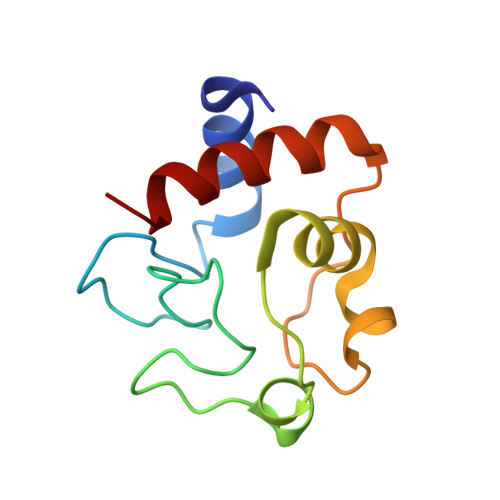Cytochrome c lysine acetylation regulates cellular respiration and cell death in ischemic skeletal muscle.
Morse, P.T., Perez-Mejias, G., Wan, J., Turner, A.A., Marquez, I., Kalpage, H.A., Vaishnav, A., Zurek, M.P., Huettemann, P.P., Kim, K., Arroum, T., De la Rosa, M.A., Chowdhury, D.D., Lee, I., Brunzelle, J.S., Sanderson, T.H., Malek, M.H., Meierhofer, D., Edwards, B.F.P., Diaz-Moreno, I., Huttemann, M.(2023) Nat Commun 14: 4166-4166
- PubMed: 37443314
- DOI: https://doi.org/10.1038/s41467-023-39820-8
- Primary Citation of Related Structures:
8DVX, 8DZL - PubMed Abstract:
Skeletal muscle is more resilient to ischemia-reperfusion injury than other organs. Tissue specific post-translational modifications of cytochrome c (Cytc) are involved in ischemia-reperfusion injury by regulating mitochondrial respiration and apoptosis. Here, we describe an acetylation site of Cytc, lysine 39 (K39), which was mapped in ischemic porcine skeletal muscle and removed by sirtuin5 in vitro. Using purified protein and cellular double knockout models, we show that K39 acetylation and acetylmimetic K39Q replacement increases cytochrome c oxidase (COX) activity and ROS scavenging while inhibiting apoptosis via decreased binding to Apaf-1, caspase cleavage and activity, and cardiolipin peroxidase activity. These results are discussed with X-ray crystallography structures of K39 acetylated (1.50 ?) and acetylmimetic K39Q Cytc (1.36 ?) and NMR dynamics. We propose that K39 acetylation is an adaptive response that controls electron transport chain flux, allowing skeletal muscle to meet heightened energy demand while simultaneously providing the tissue with robust resilience to ischemia-reperfusion injury.
Organizational Affiliation:
Center for Molecular Medicine and Genetics, Wayne State University, Detroit, MI, 48201, USA.















